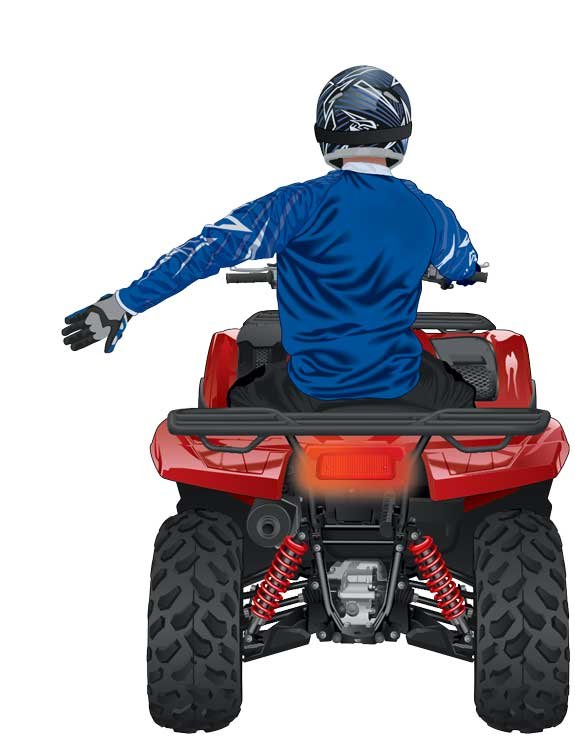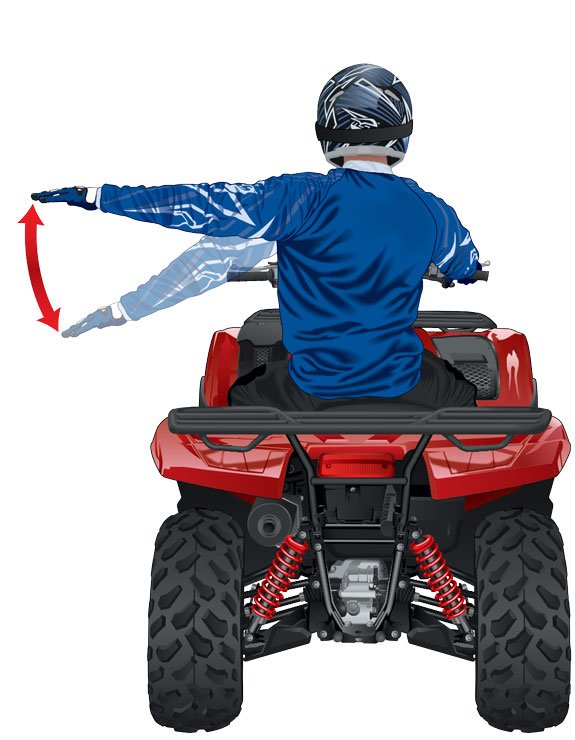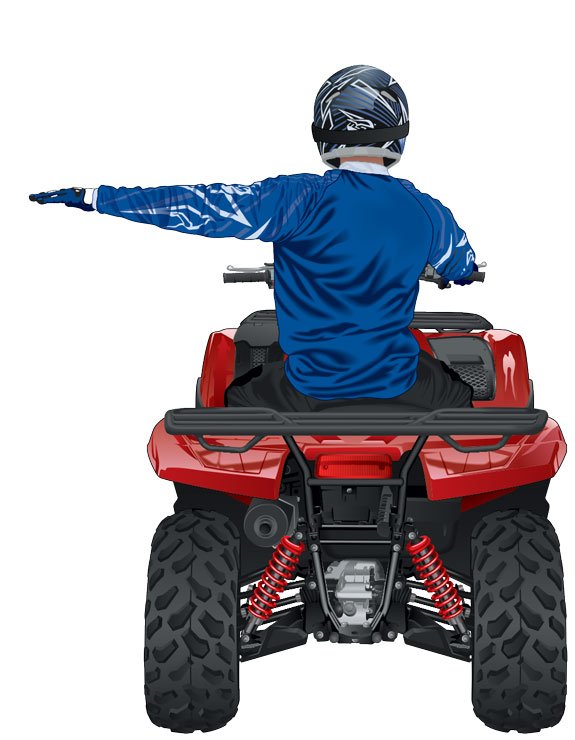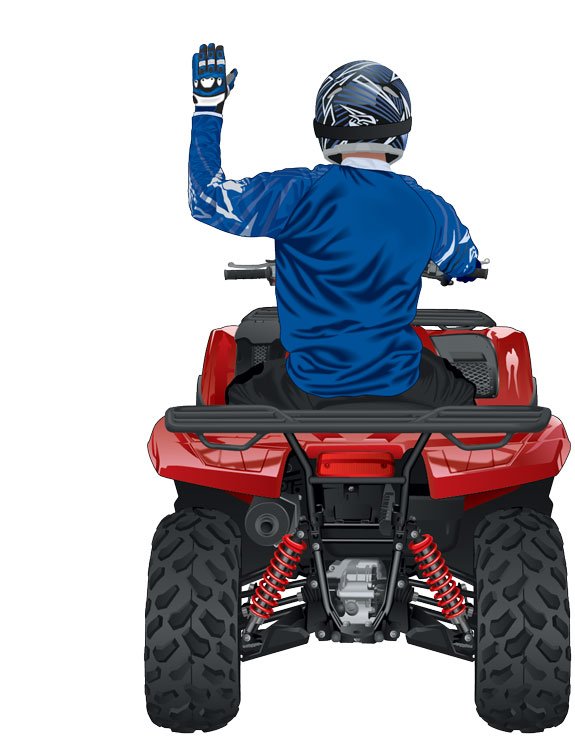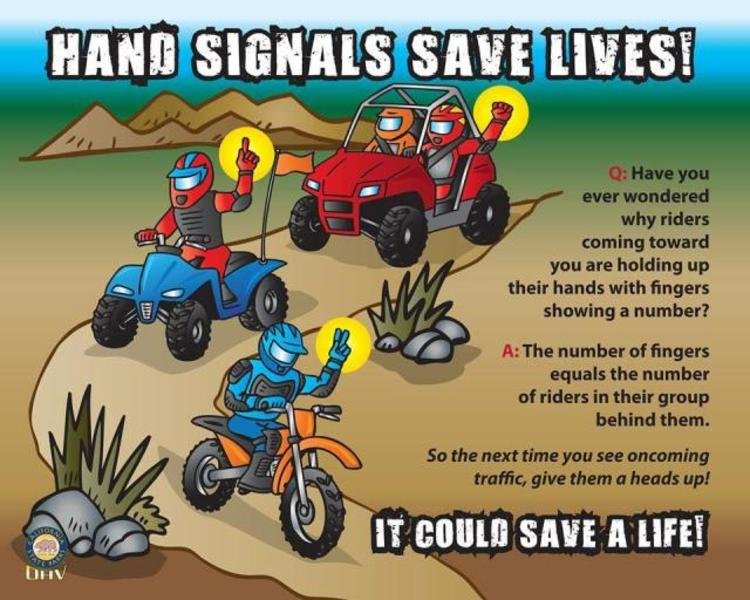Safety & Etiquette
-
Oncoming Traffic
- Keep to the right.
- Always yield to the ORV’s ascending a hill, versus the ones descending on a single trail.
- Smaller groups yield to larger groups riding on a single trail.
- Slower group permits faster group to pass on a single trail.
- Use hand signals to indicate number in party, last in party indicates last by raised fist. (see graphic below)
- When passing another vehicle, slow down to keep air born debris to a minimum.
- Yield to larger vehicles.
- When encountering someone on horseback, it’s best to stop the ORV and turn off the engine. Let the horse rider indicate when it’s safe to continue.
-
Group Riding
- Leader makes sure all riders are informed of common rules.
- Be aware if anyone in party has any medical conditions.
- Person riding is responsible for person back and front of them, if person in back is not visible, wait for them to catch up especially at intersection so they know direction of travel.
- Person is responsible to know number of riders behind them.
- Do not pass other riders unless signaled to do so.
- Alert following rider to obstacles ahead.
- Take stops regularly with large groups, stop frequency should be agreed at start of ride.
- Don’t try to ride above your capabilities, ride in conditions most comfortable to you.
- Indicate when stopping or slowing down.
- Keep less experienced riders near the front, so they can be instructed and watched carefully.
- Watch for signs of issues with ATV in front of you (ex: leaking fluids, wobbling wheel).
- Communicate with rider in front by flashing lights.
-
Land and Property
- Carry out what you carry in (don’t litter!).
- Tread lightly & respect the land.
- Remember that ORV donut scars or ruts on a dirt road do not portray riders in a positive light.
- Seek permission before traveling on private land.
- When on dirt roads, slow down near dwellings as to not raise dust.
- If you move things, put them back.
- Be aware of your surroundings.
- Report all property damage or garbage dumping to property owner.
-
General
- Stay on the trail and observe posted signage.
- Report downed trees or obstacles.
- Offer assistance to others in distress.
- Properly thank others for assistance or guidance.
- Obey local laws.
- Don’t harass wildlife.
- Be courteous to all, while riding or while stopped.
- Learn your hand signals and know when to use them.
- Don’t hesitate to ask questions or advice from other riders.
- Clear small obstacles on the trail if they pose danger to others and pose no risk to you to remove them.
- Stop when signaled by others or law enforcement.
- Do not throw cigarette butts into the woods, extinguish all flame before stowing or disposing properly.
- Be an ambassador for ORV trail riding!
-
- Ride with lights on.
- Leave at least two quad lengths space in front of you, leave more distance if dusty or raining.
- On steep terrain, lean up hill and provide scout with tow rope before climbing.
- Keep appendages within the confines of the ORV rider area, the ORV weighs more than you.
- Stand while riding over moguls.
- Do not exceed passenger count specification of ORV.
- Follow the age recommendations of the ORV class.
- Do not operate under the influence of a controlled, prescribed, or illegal substance.
- Do not drink alcohol and drive.
- Slow down when approaching water; treat it as if there are hidden obstacles.
Traveling in a group requires communication between riders. It’s critical to make sure everyone in your group understands some basic hand signals for staying safe at all times.
